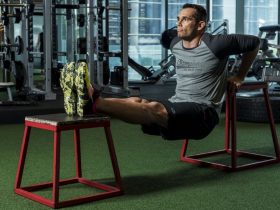In the pursuit of long-term fitness, cardio exercise holds a place of undeniable importance. It’s the backbone of heart health, weight management, and overall endurance. Whether your goal is to shed a few pounds, increase cardiovascular fitness, or simply lead a healthier lifestyle, the key to sustained success lies in the establishment of consistent, smart cardio habits. The truth is, reaching your fitness goals doesn’t require radical or extreme changes; rather, it’s the small, daily actions—when done consistently—that produce the most profound results.
This article will explore the daily habits that can elevate your cardio routine, ensuring long-term success without overwhelming your body or your schedule. With the right approach, you can transform your cardio workouts into a sustainable, enjoyable part of your daily life.
1. Consistency Over Intensity
One of the most fundamental principles in any fitness journey is the concept of consistency. In terms of cardio, it’s not the occasional intense workout that will give you the best results, but rather, the habit of consistent exercise. According to research, moderate-intensity cardio performed regularly is far more beneficial than sporadic, high-intensity sessions.
It’s tempting to push hard in an attempt to accelerate results, but such extreme efforts are often short-lived. Instead, develop the habit of fitting in cardio exercises regularly—whether it’s walking, cycling, swimming, or running. The American Heart Association recommends at least 150 minutes of moderate-intensity aerobic exercise or 75 minutes of vigorous activity per week, spread across most days.
Start by carving out a specific time each day for your cardio. The best time is the one that fits your personal routine and lifestyle. By turning it into a non-negotiable part of your day—much like brushing your teeth or eating lunch—you will build the foundation for long-term success.
2. Gradual Progression to Avoid Burnout
While consistency is important, it’s equally crucial to avoid the trap of overtraining, especially in the early stages of a cardio program. Progressing too quickly can lead to burnout, injury, or a decline in motivation. For long-term success, it’s important to pace yourself.
Start slow and gradually build intensity and duration. If you’re a beginner, start with 15-20 minutes of moderate cardio per session and gradually work your way up to 30-45 minutes. The key is to listen to your body and allow it the time it needs to adapt to the physical stress of cardio. According to the Journal of Applied Physiology, moderate increases in intensity and duration help the body gradually improve cardiovascular capacity and endurance without overwhelming it.
Make small, incremental improvements each week, whether it’s adding a few extra minutes to your session or increasing your pace slightly. This gradual progression not only reduces the risk of injury but also helps your body adapt and become stronger over time.
3. Incorporate Variety to Stay Engaged
One of the greatest hurdles to sticking with a cardio routine long-term is monotony. Performing the same exercises day after day can quickly become boring, making it harder to stay motivated. In order to keep your cardio routine engaging and effective, incorporate variety into your daily workouts.
This can mean trying new cardio activities, such as cycling, rowing, or dance-based workouts like Zumba. You can also switch between high-intensity interval training (HIIT) and steady-state cardio to keep things fresh. HIIT, which involves alternating between short bursts of intense exercise and recovery periods, has been shown to increase cardiovascular fitness while also burning fat more effectively than traditional steady-state cardio.
Additionally, consider varying the terrain or environment in which you exercise. If you typically run on a treadmill, take your run outside and enjoy the changing scenery. Not only will this change your routine, but outdoor exercise also offers the added benefit of fresh air and exposure to nature, which research suggests can improve mental well-being.
4. Make It Enjoyable: Find What Works for You
A cardio routine will only stick if it’s something you enjoy. When you choose activities that you genuinely like, you’re more likely to stick with them for the long haul. Whether it’s running, swimming, dancing, or cycling, find the type of cardio exercise that brings you joy.
Incorporating music, podcasts, or audiobooks into your cardio sessions can also make the experience more enjoyable and motivating. Listening to upbeat music can elevate your energy levels, while engaging in a captivating audiobook or podcast can help distract you from the physical effort, making the time pass more quickly.
Another effective strategy for increasing enjoyment is to set goals tied to your cardio routine. These can be small, achievable targets such as running a specific distance, completing a particular number of sessions per week, or improving your speed. Having a measurable goal will keep you motivated and create a sense of accomplishment each time you achieve it.
5. Focus on Proper Nutrition and Hydration
Cardio exercise places stress on the body, and the way you fuel and hydrate yourself can significantly impact your performance and recovery. To ensure long-term success in your cardio routine, make proper nutrition and hydration a priority.
Carbohydrates are the body’s primary source of energy during cardiovascular exercise, and they are crucial for maintaining stamina throughout your workout. Foods like whole grains, fruits, and vegetables provide a steady supply of energy for your muscles. Protein, on the other hand, supports muscle repair and recovery, so don’t overlook it in your post-workout nutrition.
Hydration is equally vital for maintaining peak performance. Dehydration can lead to fatigue, cramping, and poor recovery. Make sure to drink water throughout the day, especially before and after your cardio workouts. If you’re engaging in longer or more intense sessions, consider replenishing electrolytes as well.
Many people neglect the importance of pre-workout nutrition, but a light snack with a mix of carbs and protein can help fuel your exercise. Examples include a banana with peanut butter or a small smoothie with fruit and yogurt. A balanced pre-workout meal ensures that your body has the fuel it needs to perform at its best.
6. Allow for Recovery and Rest
Cardio exercise, while beneficial, also places a significant amount of strain on the body. For long-term success, it’s important to give your body time to recover. This means taking rest days, alternating between intense and moderate workouts, and paying attention to your body’s signals.
Rest and recovery are when the body adapts to the physical stress of exercise, repairing muscle fibers, replenishing energy stores, and improving cardiovascular capacity. Without adequate recovery, overtraining can lead to fatigue, injury, and burnout, which will ultimately derail your progress.
Active recovery is a good option, particularly for beginners or those recovering from a more intense workout. This could include light walking, stretching, or yoga. Stretching also helps improve flexibility, which can enhance your overall performance and reduce the risk of injury.
7. Track Your Progress
Tracking your progress is a great way to stay motivated and ensure that you’re consistently improving. Keeping a workout log or using a fitness app to record your cardio workouts can give you valuable insights into your performance and help you set realistic goals for future sessions.
As you progress in your cardio routine, you’ll notice improvements in your stamina, speed, and overall health. Whether it’s running an extra mile or increasing the intensity of your sessions, acknowledging and celebrating these milestones is important for maintaining long-term motivation.
Conclusion
Building a cardio routine that leads to long-term success requires consistency, gradual progression, variety, and attention to the body’s recovery needs. By developing daily habits that prioritize enjoyment, proper nutrition, hydration, and rest, you create a solid foundation for a sustainable and effective cardio program. Remember, the key to success lies not in pushing yourself to extremes but in creating a balanced, enjoyable routine that becomes a natural part of your daily life. Stick with it, and over time, you will experience the remarkable physical and mental benefits that regular cardio exercise brings.









